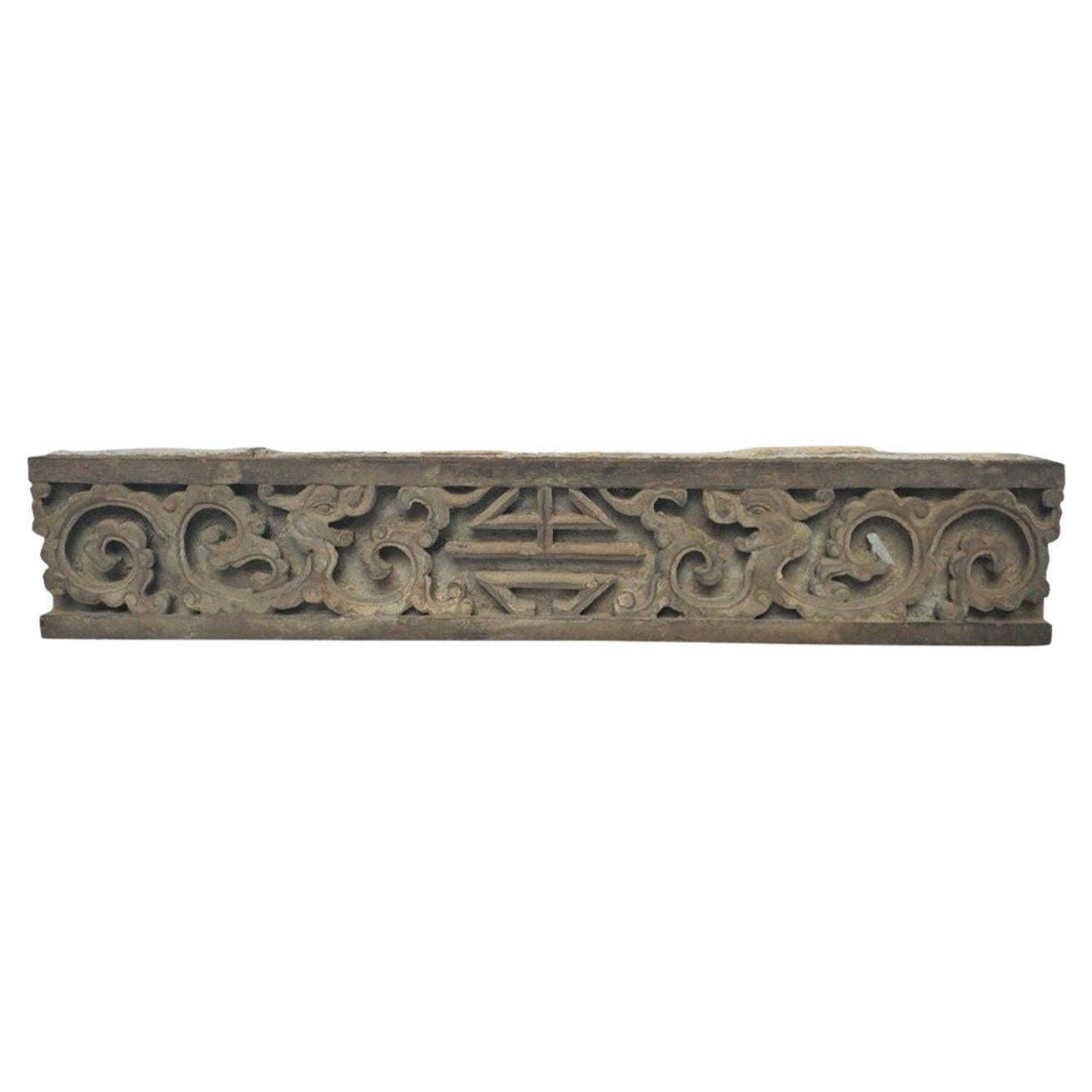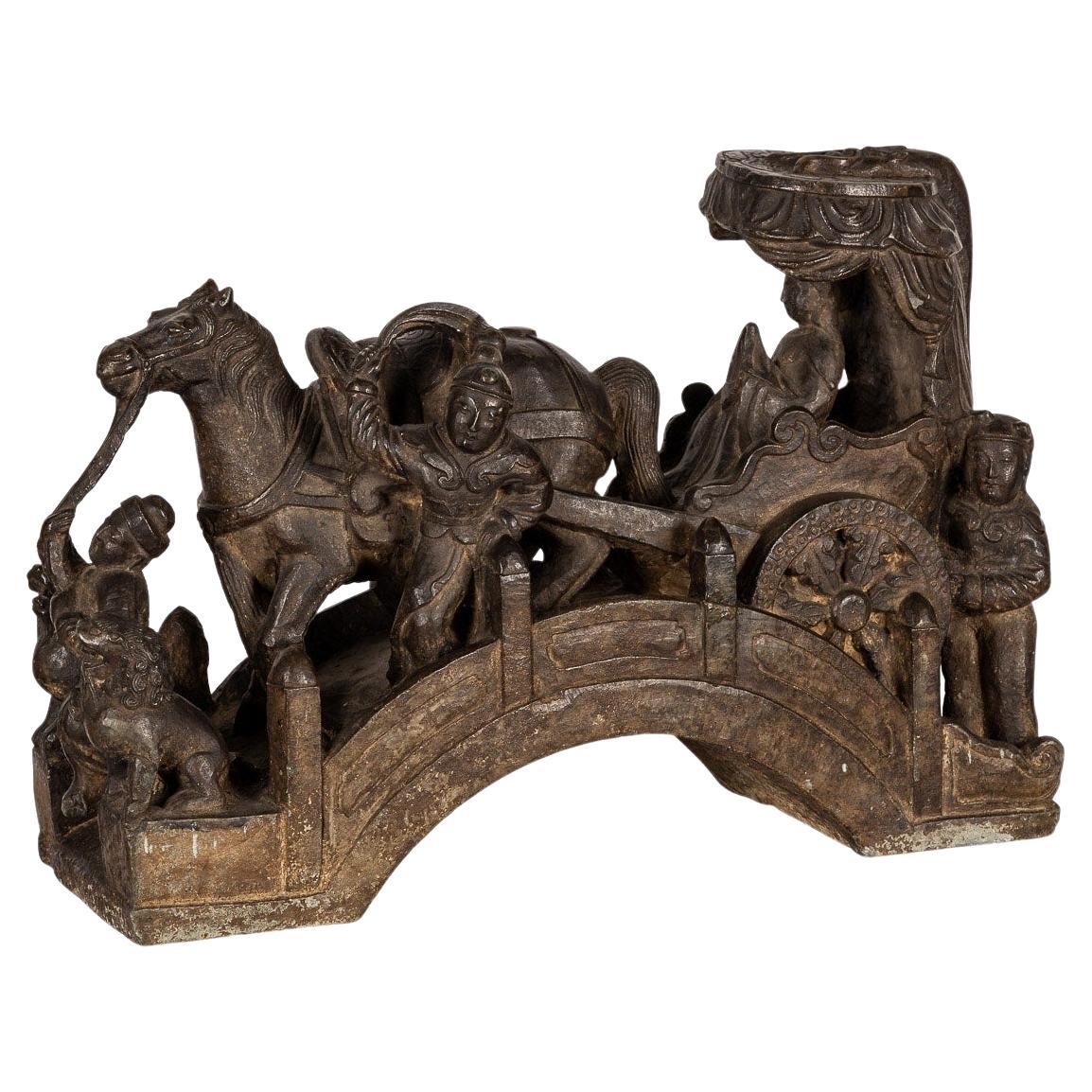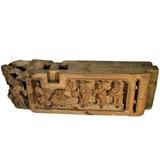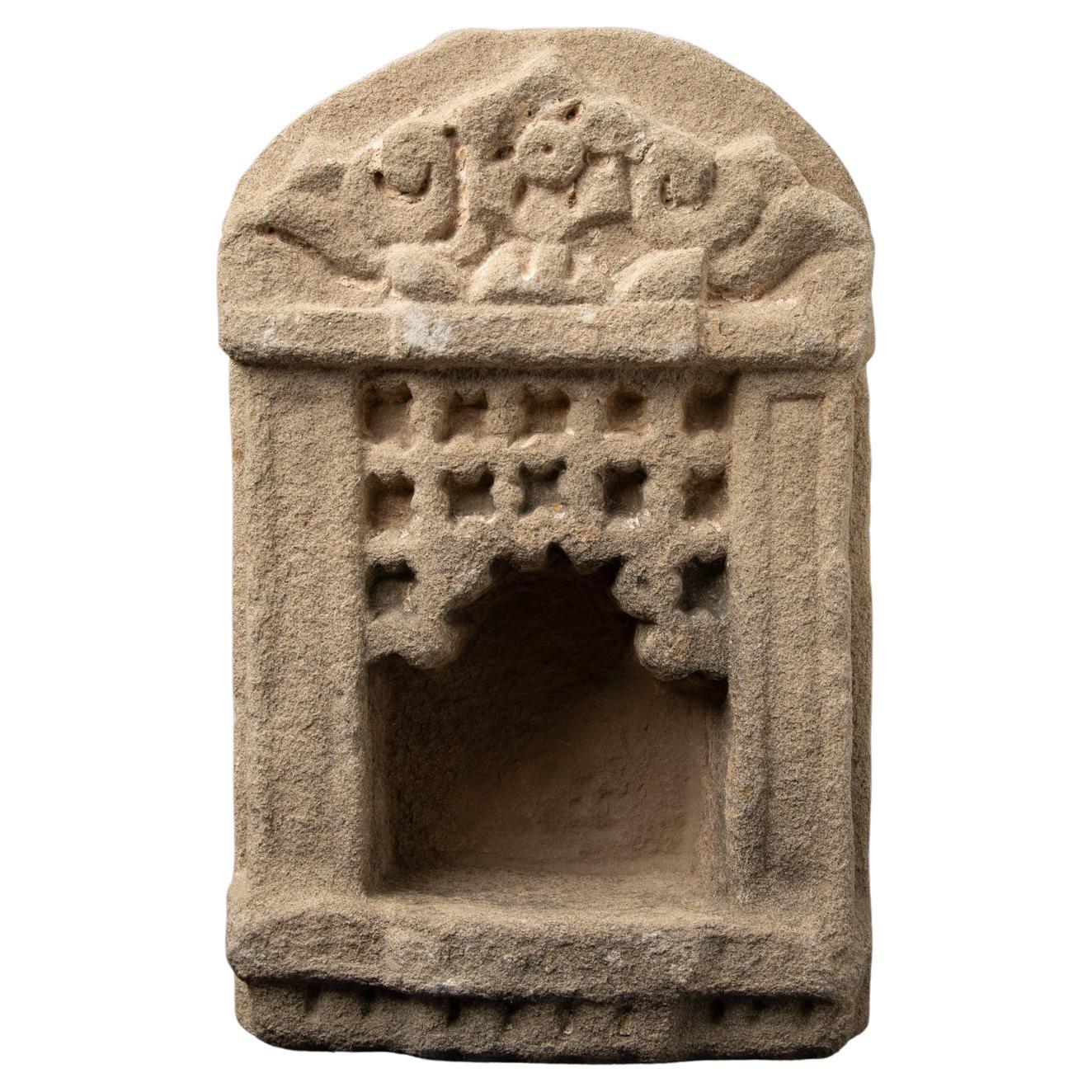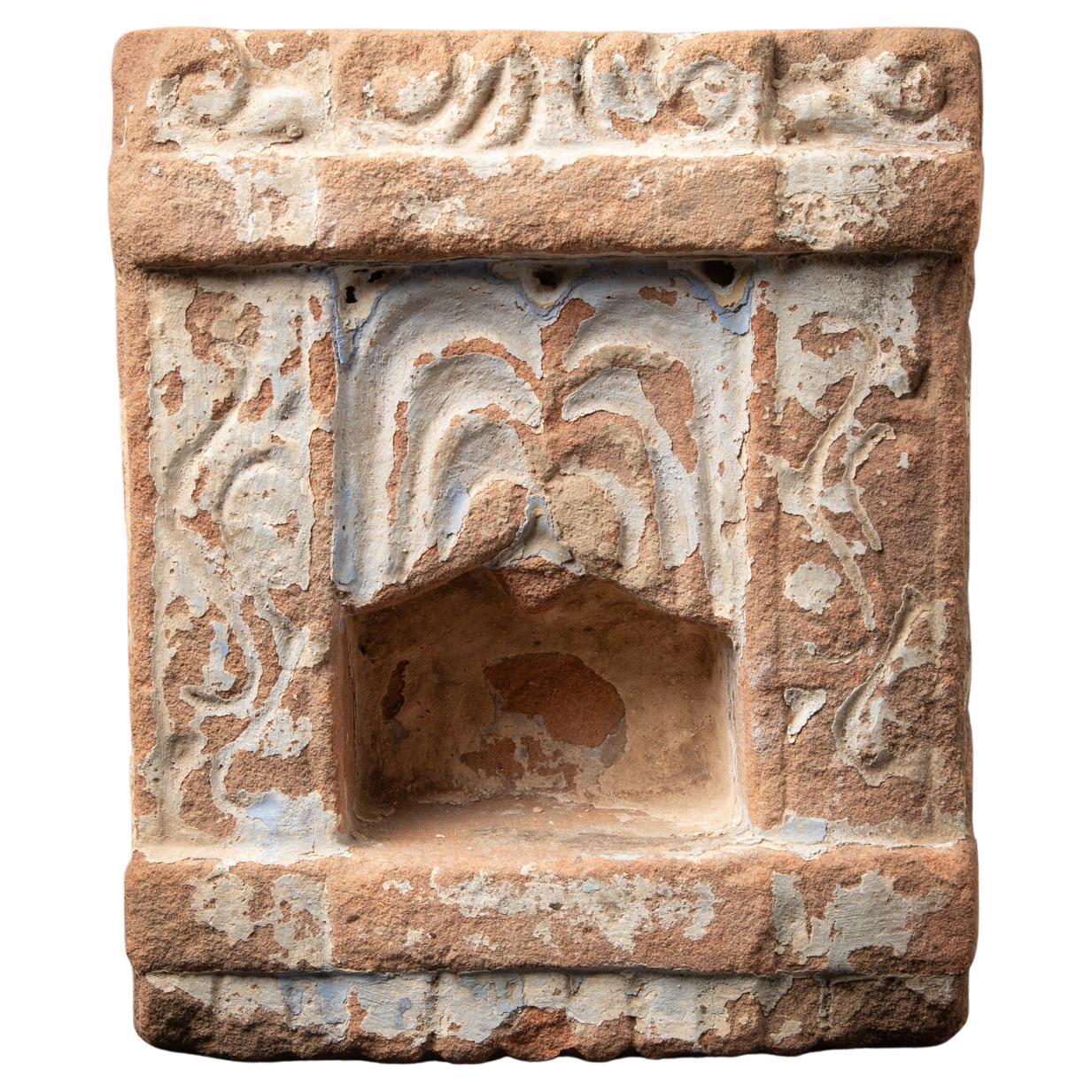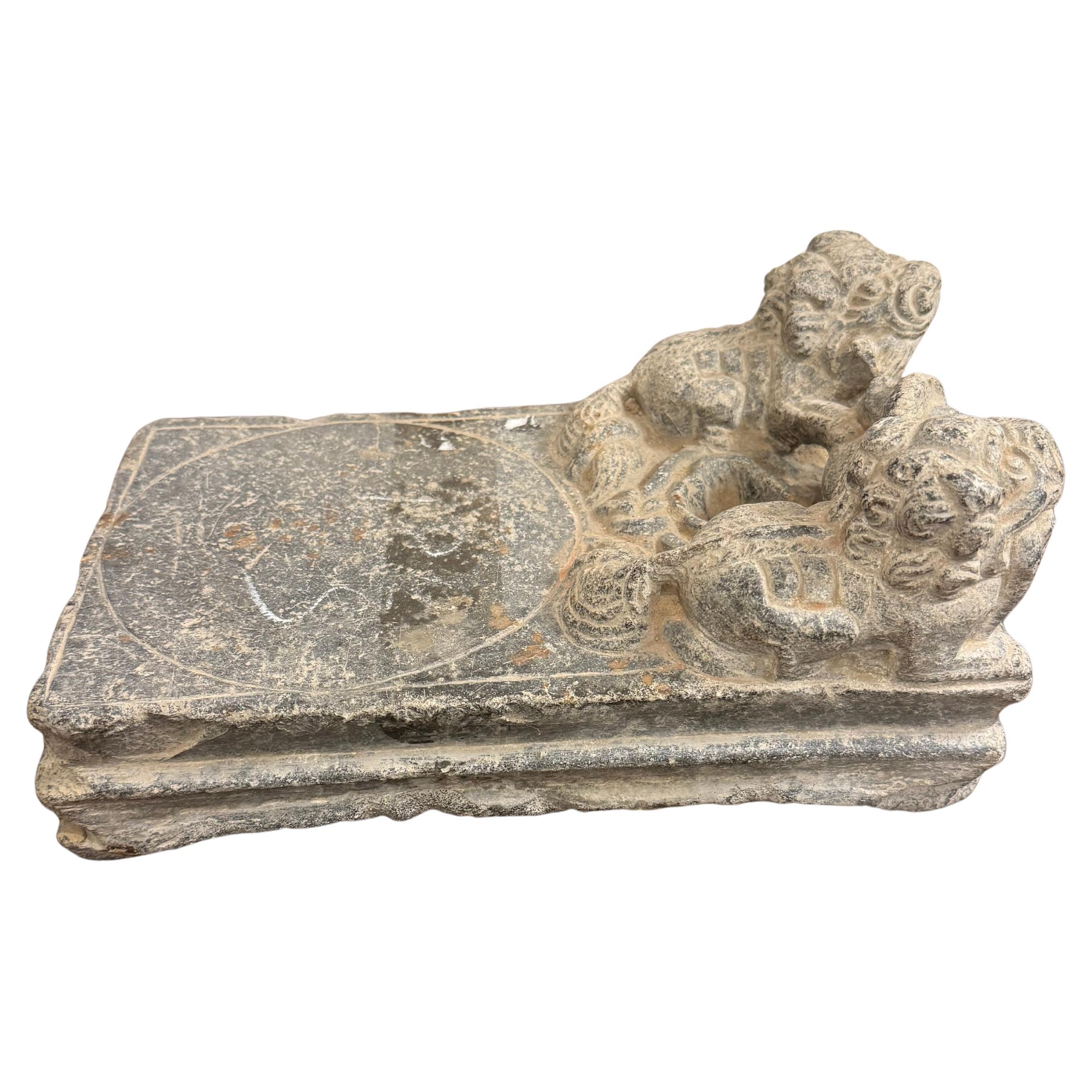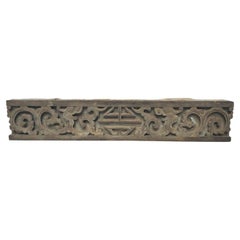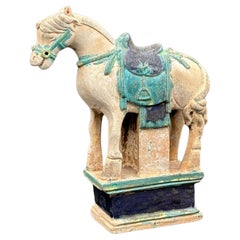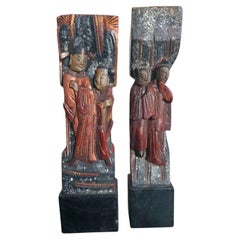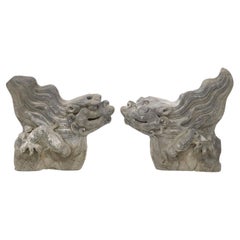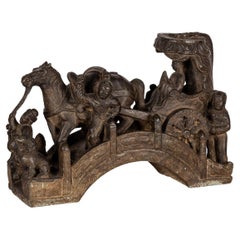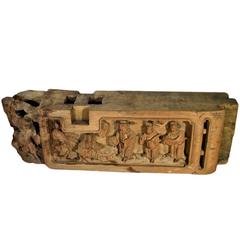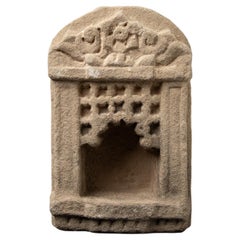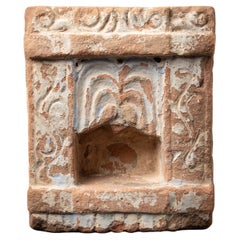Items Similar to Antique Asian Temple Stone Relief Carved Architectural Element
Want more images or videos?
Request additional images or videos from the seller
1 of 21
Antique Asian Temple Stone Relief Carved Architectural Element
$9,500
£7,213.58
€8,249.26
CA$13,272.88
A$14,762.34
CHF 7,708.43
MX$179,641.94
NOK 98,448.46
SEK 92,327.29
DKK 61,567.40
Shipping
Retrieving quote...The 1stDibs Promise:
Authenticity Guarantee,
Money-Back Guarantee,
24-Hour Cancellation
About the Item
A magnificent, rare, one of a kind, ancient Asian temple stone architectural panel, likely frieze fragment. Born in Asia, pre-18th century, most likely much earlier, the hand carved stone sculpture displays superbly.
This very old architectural element features exceptionally executed high relief work, ornately sculpted, intricately detailed hand carvings, having a pair of figural horses at center, each well defined and wonderfully posed to display movement; to the right a religious monastery/ stupa; over two upside down lotus flowers, likely symbolizing a death, to the left the second-holiest tree of Buddhism, the Anandabodhi Tree (Ananda Bodh Tree - Ficus religiosa - Sacred fig) with stylized roots, branches and leaves, above the tree impressive openwork creates another layer of dimension; behind the horse on the right there are markings that possibly indicate a cave or cave temple. The sculptural decorative temple wall plaque has remnants remaining of volute ornamentation running across top.
Provenance:
Personal property of Genshiro Kawamoto. A Japanese real estate tycoon billionaire and avid decorative arts collector who owned a large number of apartment complexes, commercial buildings, skyscrapers, and numerous multi-million dollar homes in Hawaii, some of which he left vacant and in disrepair, others he planned on converting multiple into museums to house and display some of his extensive collection of fine antiques and important artifacts. Kawamoto was building one of the most expensive homes ever built in Hawaii and planned on including decorative art pieces such as this fragment in the construction. Prior to completion Kawamotot was arrested for tax evasion, found guilty, subsequently deported back to Japan to serve his prison sentence. Workung with the American government, the Japanese government seized his assets, including millions of dollars of decorative arts, later auctioning them to the public.
Acquisition:
Maui, HI. 02/2020, Lynx Hollow Antiques acquired this piece from an important and arguably best known antiques dealer in the Hawaiian Islands. He worked directly with Kawamoto for years and later purchased many pieces at the seized asset auctions on both Maui and O'ahu.
Measures: (approx)
10.5" Wide, 5.5" High, 3" Deep .
A most impressive work, with superior craftsmanship, the architectural salvaged decorative building element is interesting, highly attractive, and museum quality. Not only would this be the highlight of most collections, but it serves as a elegant decorative object, whimsical design, and sophisticated conversation piece.
- Dimensions:Height: 5.5 in (13.97 cm)Width: 10.5 in (26.67 cm)Depth: 3 in (7.62 cm)
- Style:Ming (Of the Period)
- Materials and Techniques:
- Place of Origin:
- Period:
- Date of Manufacture:18th Century
- Condition:Wear consistent with age and use.
- Seller Location:Forney, TX
- Reference Number:1stDibs: LU5977226088612
About the Seller
4.8
Platinum Seller
Premium sellers with a 4.7+ rating and 24-hour response times
Established in 2013
1stDibs seller since 2021
293 sales on 1stDibs
Typical response time: <1 hour
- ShippingRetrieving quote...Shipping from: Forney, TX
- Return Policy
Authenticity Guarantee
In the unlikely event there’s an issue with an item’s authenticity, contact us within 1 year for a full refund. DetailsMoney-Back Guarantee
If your item is not as described, is damaged in transit, or does not arrive, contact us within 7 days for a full refund. Details24-Hour Cancellation
You have a 24-hour grace period in which to reconsider your purchase, with no questions asked.Vetted Professional Sellers
Our world-class sellers must adhere to strict standards for service and quality, maintaining the integrity of our listings.Price-Match Guarantee
If you find that a seller listed the same item for a lower price elsewhere, we’ll match it.Trusted Global Delivery
Our best-in-class carrier network provides specialized shipping options worldwide, including custom delivery.More From This Seller
View AllAntique Asian Architectural Relief Carved Stone Frieze Panel
Located in Forney, TX
An exceptional architectural high relief hand carved stone band of running scroll decoration frieze panel, with beautiful scrollwork, representing wind or water, and mythological creature, perhaps a dragon or grotesque griffin. The characters in the center may be Asian hieroglyphs (Japanese kanji). The top side has a dovetail joinery cutout from where it would have attached and fit into place before cementing it in place. 19th century or earlier.
This antique architectural salvage building element is a beautiful and artful display of history, and a quick way to add texture, character, rustic charm and interest. Will make a wonderful decorative object within your home or office.
Provenance:
Personal property of Genshiro Kawamoto. A Japanese real estate billionaire and avid art collector who owned numerous multi-million dollar properties in Hawaii and was building one of the most expensive homes in Hawaii prior to his tax evasion arrest, followed by prison sentence in Japan. He had bought multiple properties to convert into museums in order to display his personal decorative arts collection, but due to his legal and financial problems, his items were all auctioned...
Category
Antique 19th Century Asian Architectural Elements
Materials
Stone
Antique Ming Dynasty Chinese Earthenware Horse Sculpture Míngqì Tomb Figure
Located in Forney, TX
A scarce 600 year old (approx) Chinese pottery Ming Dynasty (1368-1644) large glazed earthenware míngqì tomb figure, modeled as horse sculpture with saddle, stirrups, and integral ba...
Category
Antique 15th Century and Earlier Chinese Ming Sculptures and Carvings
Materials
Earthenware
Pair of Qing Dynasty Chinese Religious Temple Architectural Ornament
Located in Forney, TX
A scarce pair of Qing Dynasty temple architectural ornaments, the decorative antique building element fragments each elaborately hand carved, polychrome painted and lacquered, richly detailed featuring two figural pairs accented...
Category
Antique Early 19th Century Asian Folk Art Architectural Elements
Materials
Mother-of-Pearl, Wood, Lacquer, Paint
Chinese Ming Dynasty Architectural Terracotta Roof Tile Figure Qilin Foo Dog pr
Located in Forney, TX
A remarkable pair of large Ming Dynasty (1368-1644) earthenware Imperial roof decorations - ornamental architectural terracotta roof tile beasts.
15th/16th century or earlier, Northern China, most likely Forbidden City, Dongcheng District, Beijing, figural pottery modeled as mythical qilin (foo dog / guardian lion), the crouching beast with legs back and flaming body depicted ready to pounce. Retaining partial remnants of the red wax export seal, indicating they are authentic and were legally exported out of the country.
Dimensions: (approx)
Largest: 18" Tall, 19" Wide, 8" Deep
History:
Chinese roof tiles have been a part of Chinese architecture for over 2,000 years. These unique and beautifully crafted tiles have become an integral part of traditional Chinese culture, and have gained international recognition for their beauty and cultural significance. In this article, we will explore the different types of Chinese roof tiles, their construction, cultural significance, preservation and restoration techniques, and modern uses.
Chinese imperial roof decorations or roof charms or roof-figures (Chinese: 檐獸/檐兽; pinyin: yán shòu) or "walking beasts" (Chinese: 走獸/走兽; pinyin: zǒu shòu) or "crouching beasts" (Chinese: 蹲獸/蹲兽; pinyin: Dūn shòu) were statutes placed along the ridge line of official buildings of the Chinese empire. Only official buildings (palaces, government buildings, and some temples) were permitted to use such roof decorations.
Occasionally arranged in an outward marching procession with various different examples, the number and type indicating the importance of the duties performed within the building or within the courtyard protected by a gate. With a maximum number of nine, the mythical beast was one of the highest in rank, thus modeled set to pounce upon the man and lower ranking creatures, ready to devour them should they stray from performing their duties with faithfulness and rectitude
The Design and Construction of Chinese Roofs:
The roof design is an important aspect of Chinese architecture, with each component of the roof playing a specific role. Chinese roof tiles fit into the overall design of the roof and are placed on top of wooden supports called purlins. The interlocking system of Chinese roof tiles ensures that they stay in place and prevent leaks. Ridge tiles...
Category
Antique 16th Century Chinese Ming Sculptures and Carvings
Materials
Earthenware, Terracotta
Rare Set of Two Qing Dynasty Chinese Architectural Temple Brackets
Located in Forney, TX
An original matched pair of exceptionally carved Chinese temple architectural ornaments, the ornate decorative brackets salvaged from an early Qing Dynasty temple, the richy detailed...
Category
Antique Early 19th Century Asian Folk Art Architectural Elements
Materials
Wood, Lacquer, Paint
Antique Qing Dynasty Chinese Glazed Terracotta Guardian Lion Roof Tile Figures
Located in Forney, TX
A remarkable pair of rare antique Qing Dynasty (1636-1912) Chinese terracota architectural roof tile beasts. circa 1900
Hand-crafted in Imperial China around the turn of the late 19...
Category
Early 20th Century Chinese Qing Architectural Elements
Materials
Terracotta
You May Also Like
19th Century Chinese Carved Limestone Statue
Located in Royal Tunbridge Wells, Kent
Antique 18-19th Century Chinese carved limestone sculpture, depicting a horse drawn carriage going over a bridge, being accompanies by serva...
Category
Antique 19th Century Chinese Antiquities
Materials
Limestone
Hand-Carved Chinese Temple Carving from the 19th Century with Traces of Paint
Located in Yonkers, NY
This splendid antique Chinese temple carving was hand-carved from a solid block of wood during the 19th century. On its main side it displays ...
Category
Antique 19th Century Chinese Sculptures and Carvings
Materials
Wood
Antique sandstone temple from India from 19 Century OriginalBuddhas
Located in DEVENTER, NL
Antique sandstone temple from India
Material: Sandstone
31 cm high
19,5 cm wide and 10,5 cm deep
19th century
Weight: 12,23 kgs
Originating from India
Category
Antique 19th Century Indian Sculptures and Carvings
Materials
Sandstone
Antique sandstone temple from India from 19 Century OriginalBuddhas
Located in DEVENTER, NL
Antique sandstone temple from India
Material: Sandstone
31 cm high
25,6 cm wide and 10,7 cm deep
19th century
Weight: 13,65 kgs
Originating from India
Category
Antique 19th Century Indian Sculptures and Carvings
Materials
Sandstone
A Chinese Carved Inkstone, 18th Century
Located in ARMADALE, VIC
A Chinese Carved Inkstone, 18th Century
Provenance: Private Australian Collection Acquired in 1980s.
Dimensions:
Height: 12.5cm.
Width: 28.5cm.
Depth: 17.5cm.
Category
Antique 18th Century Chinese Qing Scholar's Objects
Materials
Stone
19 Century Antique sandstone Indian temple from India - OriginalBuddhas
Located in DEVENTER, NL
Discover this antique sandstone Indian temple, an exceptional 19th-century artifact showcasing exquisite traditional Indian artistry. Crafted from solid sandstone, it measures 47 cm ...
Category
Antique 19th Century Indian Sculptures and Carvings
Materials
Sandstone
More Ways To Browse
Antique Stone Well
Antique House Architectural Design
Stone Relief
Most Expensive Item
Fragment Stone
Carved Stone Flowers
Relief Frieze
Stone Plaque
Antique Architectural Plans
Antique Stone Horse
Horse Antiques Collectables
Carved Relief Plaque
Religious Plaques
Hawaiian Antique
Ming Figure
Large Architectural Frieze
Hollow Tree
High Relief Plaques
